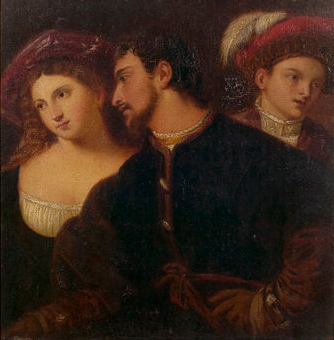Giorgione is a famous Italian painter from the Venetian School of the Great Renaissance of Venice, who died in his thirties. Giorgione is known for the indefinable poetic excellence of his work, and many of the surviving works are firmly attributed to him.
The vagueness surrounding the uniqueness and connotation of his works has made Giorgione one of the most mysterious figures of European sculpture. The universality of Giorgione's genius was unmistakable, as it was extremely pronounced in all phases of the art of watercolours. Among his incredible works, the triple portrait has gained a lot of gratitude. In collaboration with Titian, he created the idiosyncratic Venetian school of painting of the Italian Renaissance, which draws much of its result by its hue and disposition, and is traditionally analogized with the Florentine portrait, which is based on a more consistent elegance inspired by the design.
Giorgione's prompt works of art are beautifully evident from his education and the influences of friends he has encountered. Leonardo da Vinci has greatly influenced his works. Giorgione did not keep this great artist idea for himself, but he still influences Titian, who was his classmate at that time. In his sketches, he explored and penetrated the human charism and documented it in graphic skills representations. Giorgione and Titian also transfigured the portrait field. It is extremely difficult and sometimes intolerable to differentiate Titian's promising works from those of Giorgione. Here is his portrait: Laura's portrait was the first to be painted in a modern style.
The second, more striking, is the Portrait of a Young Man, highly admired by the historians of sculpture for the extremely elusive expression of calm and motionless lines. And finally the portrait of old women. The technique applied by Giorgione to modify his work was an oil painting technique. Looking for a technique to apply in painting that will never let you down? The oil painting technique is the answer. Giorgione's creativity was undeniable both in his choice of theme and in his mode of operation. He was one of the first Italian watercolorists to have dissociated the obsolete means of tempera from the egg instead of the new oil painting.
Oils recognized for the creation of an extra bright and covered canvas and which constitute a means of marking a superior melodramatic perspective in the decorated scene. Oil painting techniques often begin with the painter describing the theme on the canvas with charcoal or water paint. The oil paint is usually blended with linseed oil, drawing oil or other thinners to make the colour thinner, drier or slower drying. A simple rule of thumb for using oil paint is the layer of grease on the thin layer, indicating that each additional layer of paint must cover a greater amount of oil than the lower layer to allow for precise drying.
If you add layers with less oil, the final web will crack and peel off. Today, his works are collected at the Hermitage Museum in St. Petersburg and the Metropolitan Museum of Art in New York, among others.




